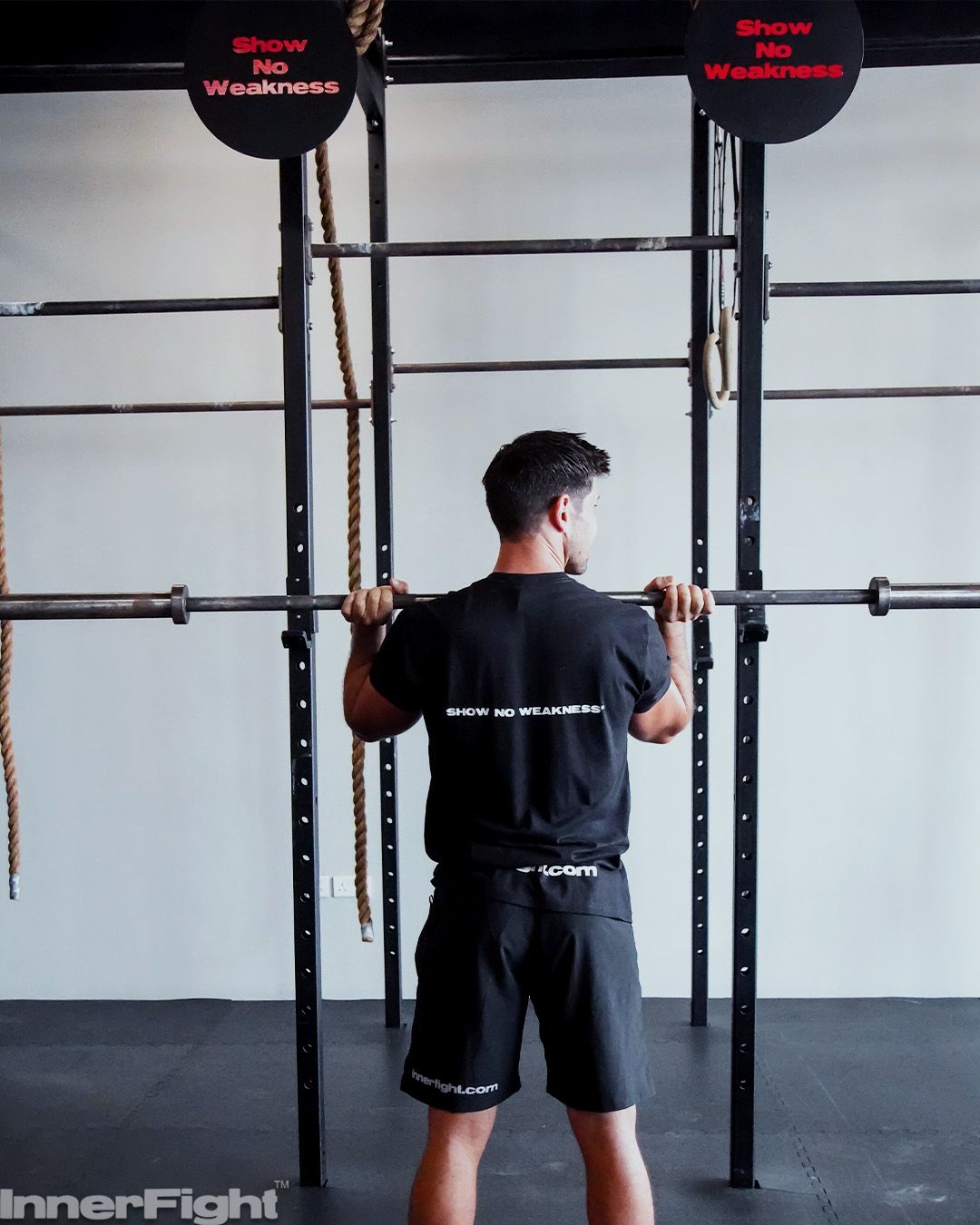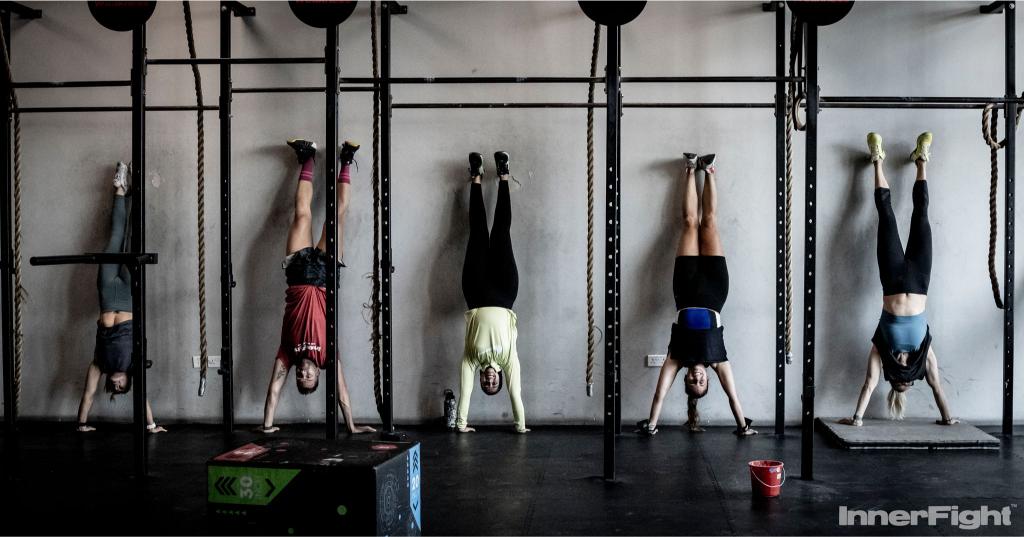Optimising Training During Pregnancy

Training During Pregnancy: safety, performance and recovery
Having a baby can make you a stronger, faster athlete. Pregnancy isn't a limitation to manage; it's a powerful mental and physical transformation when nurturing life can help you discover new strength. Could training during pregnancy unlock better performance while supporting your baby's development?
In a groundbreaking study of elite-runners half the athletes had better IAAF performance scores post-pregnancy. The key is knowing how to modify your training during pregnancy as your body transforms.
At InnerFight, we empower performance throughout every phase of life. Our specialist coaches guide women through safe and effective training during pregnancy - honouring athletic ambitions alongside the empowering journey of motherhood.
Why Training During Pregnancy Must Evolve
During pregnancy your blood volume, heart rate, stroke volume, and cardiac output increase, while vascular resistance decreases. Progressive weight gain shifts your center of gravity, and hormonal adaptations create a pregnancy-specific endocrine profile that makes tissues more flexible.
But these changes aren’t obstacles to your training during pregnancy. They are beneficial adaptations that can be leveraged to enhance postpartum cardiovascular capacity. Recent research revealed that elite athletes maintained, and often exceeded, pre-pregnancy performance levels - demolishing the myth that pregnancy derails athletic careers.
Pregnancy can increase cardiac output by 50% - creating a built-in cardiovascular training stimulus. Modified exercise while pregnant maintains physical health, reduces the risk of gestational diabetes, lowers anxiety, improves sleep quality, and enhances well-being. With intelligent adaptation, pregnancy can be integrated into a high-performance training lifecycle.
Incredible Natural Adaptations
The female body performs remarkable feats of engineering during pregnancy:
- Abs separate to make room for the baby - triggered by pregnancy hormones that soften connective tissue, this temporary widening happens in 60% of women and naturally closes postpartum as hormone levels return to baseline.
- Ribcage expands and ribs flare outward to accommodate your growing uterus and allow for increased lung capacity.
- Pelvic floor muscles stretch and adapt to support the increasing weight above.
- Heart rate increases by 10-20 beats per minute even at rest - like having a built-in cardio boost!
- Joints become more mobile thanks to the hormone ‘relaxin’ - nature's way of preparing for birth.
These changes provide an optimised environment for your baby, while maintaining your strength and capability, and they need to be taken into careful consideration when training during pregnancy.
Safely Embracing the Advantage
At InnerFight, we teach people to listen to their body’s signals, and respond effectively. Training during pregnancy requires the courage to modify, the wisdom to listen, and the discipline to execute a long-term vision.
The strongest athletes understand that adaptation isn’t weakness; it’s intelligent strength. When you modify your training during pregnancy, you’re not stepping back, you’re stepping into a sophisticated collaboration.
The Science-Based Modification Framework
Unfortunately, many women receive outdated advice about exercise from their maternal healthcare team. This is why working with specialised coaches, who understand training during pregnancy, is critical for effective adaptations using modern techniques.
Heart Rate Limits
For decades, pregnant women were told to keep their heart rate below 140 beats per minute during exercise. This restriction from the American College of Obstetricians and Gynaecologists (ACOG) was based on theoretical concerns not evidence.
The risk-adverse limit treated all pregnant women as if they had the same fitness level. But an elite athlete training during pregnancy is completely different to a sedentary woman exercising for the first time.
ACOG removed the scientifically-unfunded limit nearly three decades ago - acknowledging that heart rate is an unreliable measure for exercise and training during pregnancy (in part due to the cardiovascular changes that naturally occur).
Evidence-Based Advice
Current evidence-based guidelines have completely shifted the focus from heart rate monitoring to perceived exertion and functional capacity.
Modern recommendations emphasize:
- Maximum perceived exertion of 12-14 on the Borg RPE scale
- The "talk test" (able to maintain a conversation while exercising)
- Individual assessment rather than universal restrictions
The RPE Revolution
Rate of Perceived Exertion (RPE) measures exercise intensity for medical and rehabilitation exercise adaptation, and exercise while pregnant. This helps you tune into your body's signals and develop internal awareness.
RPE Guidelines for Training During Pregnancy
For Cardiovascular Exercise (Borg 6-20 Scale):
- 6-11: Light intensity (should feel easy, like a gentle walk)
- 12-14: Moderate intensity (can still maintain conversation)
- 15+: High intensity (limit or avoid during pregnancy)
For Strength Training (Modified Borg 0-10 Scale):
- 0-3: Light effort (minimal strain, light resistance)
- 4-6: Moderate effort (appropriate for pregnancy strength training)
- 7+: High effort (avoid, focus on technique overload)
Safe and Practical
The RPE guidelines are based on exercise research that demonstrated moderate intensity exercise is both safe and beneficial during pregnancy.
However, the talk test remains your most practical tool for training during pregnancy - if you can't maintain a conversation during exercise, you're working too hard.

Strength Training Modifications
There are four key considerations when lifting weights while training during pregnancy, focussing on supporting your pelvic-floor and adapting positions:
Breath
The way you breathe during an exercise impacts your pelvic floor. Spend time on diaphragmatic breathing - something you can start in your first trimester and continue throughout your pregnancy and postpartum. Proper breathing patterns become even more critical as your core changes.
Pressure
Pay attention to your intra-abdominal pressure during all movements, especially compound lifts.
Avoid: visible abdominal doming/coning (excessive outward pressure into your abdominal wall) and bearing-down sensations or feelings of heaviness in your pelvic floor (excessive downward pressure).
Adapt by: using gentle, coordinated breathing that maintains core stability without strain, reducing load/intensity when pressure symptoms occur, and focusing on controlled movement not forceful bracing.
Tension
Where do you hold tension in your body? Are you someone who constantly squeezes her butt, sucks in her belly, or clenches her jaw? These impact your pelvic floor and need to be addressed when you are training during pregnancy, and during your day-to-day activities.
Adaptations: scan and release unnecessary tension, practicing diaphragmatic breathing to naturally soften your core, and incorporating gentle mobility work.
- Body scanning: Regular check-ins to identify and release tension
- Breathing: Deep belly breathing to naturally relax core muscles
- Mobility: Integrate more stretching throughout pregnancy
Transitions: Conscious relaxation between exercises and activities
Positioning
As your belly grows, certain positions become hard to get into, and maybe even painful. You will need to adjust your stance and equipment choices accordingly:
Squat Modifications:
- Widen your stance to create space for your belly
- Use a box or bench for depth guidance
- Switch from back squats to goblet or supported squats
Deadlift Adaptations:
- Transition to sumo deadlifts (wider stance, toes turned out)
- Use hex bar/trap bar deadlifts to reduce forward lean
- Consider single-arm dumbbell deadlifts for better positioning
Upper Body Adjustments:
- Raise bench angles from flat to 30-45 degrees to avoid lying flat
- Switch from barbells to dumbbells for greater range of motion
- Use incline positions for chest exercises instead of flat bench
General Positioning:
- Avoid prolonged supine (lying on back) positions after 20 weeks
- Use bolsters or pillows for support in seated exercises
- Modify plank positions to incline or wall variations
These adjustments aren't limitations; they're intelligent adaptations that allow you to continue effective training during pregnancy while keeping both you and your baby safe.
Recovery and Relaxation
Incorporate stretching and breathing relaxation techniques. We often hear how important it is to strengthen the pelvic floor muscles during and after pregnancy, but relaxing the muscles often gets overlooked.
Key mobility focuses
- Hip flexor lengthening for postural compensation
- Thoracic spine mobility for breathing efficiency
- Pelvic floor relaxation and release techniques
- Progressive muscle relaxation for stress management
Understanding the importance of training hip mobility pre and postpartum becomes especially crucial as your body prepares for, and recovers from, birth.
Frequency and Duration
Regular guidance is that pregnant women should get 150 minutes of moderate-intensity aerobic activity every week. However, elite athletes maintain much higher volumes - approximately two to four times greater than current guidelines, with zero adverse outcomes.
Shorter, more frequent, workouts may be more manageable, and spreading workouts over several days can help. Ultimately, the best approach to training during pregnancy is personalised to your specific needs.
Trimester-Specific Programming
From managing fatigue and nausea in the first trimester to modifying positions and reducing impact in the second and third trimesters, each phase of pregnancy brings unique considerations. The key is listening to your body, prioritizing comfort over intensity, and not preparing for birth like an athletic event.
Understanding how to adapt your workouts during different phases of gestation is crucial for optimal outcomes. The latest research from elite athletes can guide your approach.
First Trimester (Weeks 1-12)
- Focus on establishing new breathing patterns
- Begin core stability modifications
- Address energy fluctuations and nausea
Second Trimester (Weeks 13-26)
- Peak training opportunity window
- Emphasize postural strengthening
- Pay attention to abdominal muscles
Third Trimester (Weeks 27-40)
- Significantly decrease training volume
- Focus on birth preparation and recovery positioning
- Prioritize comfort and safety
For more trimester-specific adaptations consider specialised coaching and support from InnerFight athletes who have walked this path already.
Listen to Your Body
Pay attention to how you feel during and after exercise. During the first trimester, you don’t have to make many changes physically, but this can be a good time to start adjusting your mindset around training during pregnancy to prepare for birth and postpartum activity.
Instead of trying to hold on to the numbers you could do before you were pregnant, focus on:
- Effort-based training using RPE
- Movement quality over quantity
- Consistency over peak performance
- Long-term vision for postpartum return
Stay Hydrated
Drink plenty of water before, during, and after exercise as your body’s fluid needs increase when pregnant. Signs of dehydration include dizziness, a racing or pounding heart, and urinating only small amounts, or having urine that is dark yellow.
Red Flags: When to Stop
Stop exercise immediately, and contact your maternal healthcare team, if you experience:
- Contractions, vaginal bleeding or leaking amniotic fluid
- Shortness of breath on exertion, or chest pain
- Severe headaches, dizziness or visual disturbances
The InnerFight Advantage
At InnerFight, we understand that prenatal exercise isn’t just about maintaining fitness - it’s about optimizing your body for birth, recovery, and return to peak performance. Our specialist coach Carmen Bosmans combine deep expertise with personal and practical experience in pregnancy modifications.
Training during pregnancy requires intelligent individualisation. Every woman’s pregnancy journey is unique, requiring a tailored approach that honours precise needs. Pregnancy doesn’t mean pressing pause on your goals, just adapting them.
We offer in-person and online coaching bringing world-class expertise directly to you and your baby, wherever you are in the world. Don’t let outdated fears, or generic advice, limit your potential. Join the growing community of athletes who understand that pregnancy can be a powerful chapter in their performance story, not the end of it.
Disclaimer: This article provides educational information based on current research and should not replace personalised medical advice.
About InnerFight
InnerFight is a premier fitness and endurance coaching company based in Dubai. Whether you’re a busy professional seeking peak performance or an athlete pursuing ambitious dreams, InnerFight offers a supportive community where hard work, honesty, and simplicity drive extraordinary results.
We share insights, advice, tips and success stories to empower your fitness journey:
- The InnerFight Podcast features fitness, mindset, and personal stories
- The Endurance Podcast covers running, cycling, and triathlon training
- The InnerFight Blog delivers expert articles from certified coaches
Follow us on LinkedIn, Instagram, Facebook, and X for weekly motivation, training tips, and behind-the-scenes content from our Dubai community and international training camps.
If you’re based in Dubai, visit our 5,000 square foot facility to experience our world-class strength and conditioning classes, personal training, and endurance coaching. Receive 3 free sessions to experience our approach firsthand.
Fun - Honesty - Simplicity - SMASH LIFE - Mental Toughness - Hard Work




.jpg)
.avif)


.jpg)
.jpg)
.avif)

